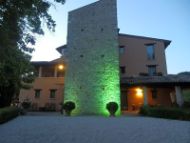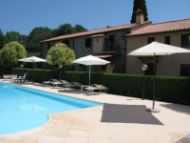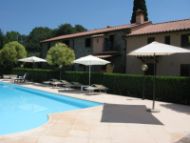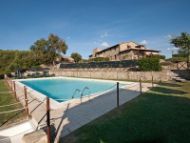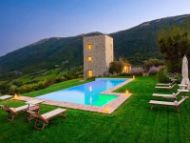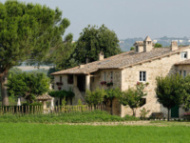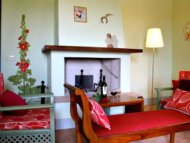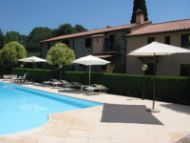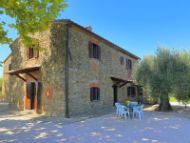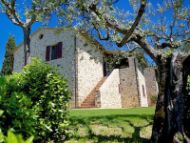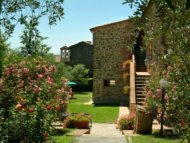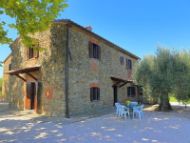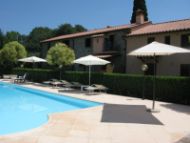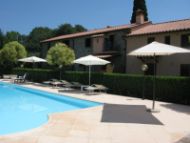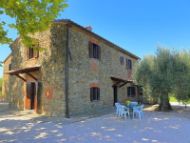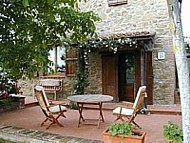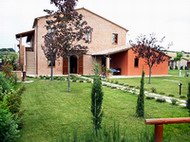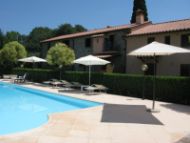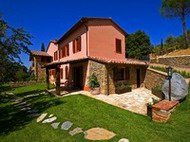Add to this all the wonderful art cities such as Perugia, Assisi, Orvieto, Gubbio, Spoleto and Todi (just to mention the most important) and we can only come to the conclusion that Umbria offers more than enough to enjoy a fantastic holiday.
Old traditions and meditation
Umbria is an ideal destination for those who are wishing for the really old traditions and meditation. Next to the afore-mentioned art cities, you will find a spiritual animation from a distant past, an almost forgotten life-style.
The nature of the average Italian from Umbria can be characterized by determination and a certain perfectionism. Therefore, one should not be surprised that this region brought forth one of the most well-known saints ever, Francis of Assisi, and many fearless, militant leaders. In the past, the inhabitants of this region learned to courageously face even the biggest catastrophes and to over and over again start afresh from the ruins of existence. In the tourist industry, this character treat resulted in the need to obtain – and therefore, the obtainment – of quality certificates in all kind of branches of this industry, and taking care to employ personnel able to look after the needs of the guests in several languages.
Study, jazz and salt
Traditionally, Umbria is a cosmopolitan region; the with energy bubbling university city of Perugia is where the famous Università per Stranieri is established (the university for foreigners). Moreover, the city of Perugia hosts twice yearly famous musical festivals, the Rockin’ Umbria and the Umbria Jazz.
Perugia also is the dynamic capital of Umbria and, as most Italian cities, age-old. The Etruscans already lived here before the 4th century B.C. In the 16th century, the city got into trouble with the then ruling Pope, Paul III, when he raised the salt prices. A popular uprising resulted and was brutally knocked down. On the Piazza IV Novembre you will find an absolutely beautiful fountain, the “Fontana Maggiore”, built to be a work of art to the end of an aqueduct. The sculptures on top are by the hands of Nicola and Giovanni Pisano, showing the twelve months of the year with the signs of the Zodiac and rural life scenes. At the corner of the Piazza stands the imposing Palazzo dei Priori dating from the 14th century with the most important picture gallery of Umbria, the Galleria Nazionale dell’ Umbria.
Francis and Clara
Of course the city of Saint Francis, Assisi, is an absolute, “holy has to be visited” when you go to Umbria. The city is situated on the slopes of the Monte Subasio and has retained the Medieval character with its many narrow streets, houses and numberless beautiful churches. Although millions of tourists come here, the whole year through, the beauty and special atmosphere has not been diminished. On the contrary: most tourists come here with the same ideas and goals, which gives a kind of bonding. It seems that the spirit of this great saint still has so much influence, that the soul of the city has remained pure. We cannot explain; you have to go to Assisi and only then you will understand, and it has nothing to do with religious beliefs, in case you have them. We do not expect you to believe we felt that, in this city, “Evil” can never rule. But we will not be surprised if you agree with us, once you have been there. Saint Francis lies buried in the basilica named after him. We recommend a visit, and also a visit to the basilica of the holy Clara (Santa Chiara).
Concerts, Popes and ceramics
Spoleto is a charming little city on a hilltop, overpowered by a Medieval castle with a history of ages. You can judge for yourself by the architecture of many monuments. An ideal time to visit Spoleto is during the festival “Dei due Mondi”, organised yearly in the last week of June till mid July. Spoleto is then full of music, more or less a continuous musical happening of high quality, with many world famous artists performing.
The city of Orvieto lies on a high plateau, at about 50 km. distance of Perugia and has many impressive monuments. Orvieto is of Etruscan origin, and was conquered by the Romans at about 264 B.C. Do not omit a visit to the Duomo and the Etruscan museum in the Palazzo dei Papi (because Orvieto was also a real Papal city).
The Medieval city of Gubbio, in the North-East of Perugia, lies a bit outside the main roads but, if the sun shines, you can see this “jewel” from afar because of the reflection of the sunlight on the rooftops. An absolute “must”!
The city of Deruta is the centre of the Majolica industry. Keep your hands on your wallet when you like Majolica, because there are so many shops with so many beautiful earthenware, that before you realise, you have been seduced to buy much more than you originally wanted.
Very worth-while visiting also are the cities of Todi, Terni, Spello, Trevi and Foligno.
Famous mushrooms
We can be short about the culinary qualities of Umbria: they are too many to mention! Try the crostini al tartufo all’ Umbra (toasted bread with anchovy and the famous truffles), spaghetti al tartufo (olive oil, broth and truffles), or coniglio al vino bianco (rabbit simmered in white wine and kitchen herbs). Choose the delicious red wine, the Montefalco, to accompany the latter dish. Around Lake Trasimeno, you will enjoy the most delectable fish dishes.

